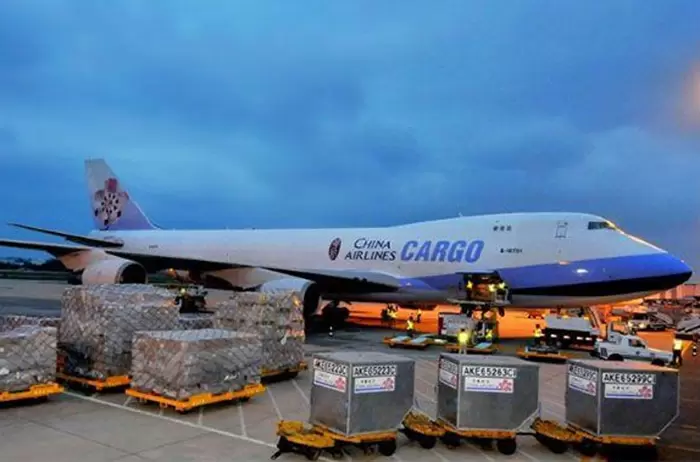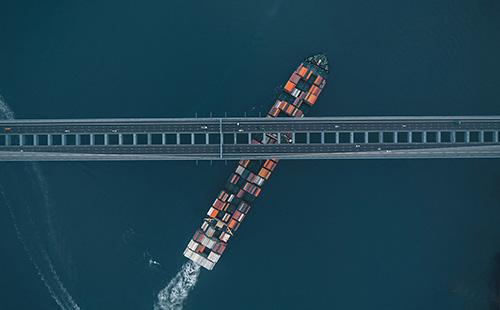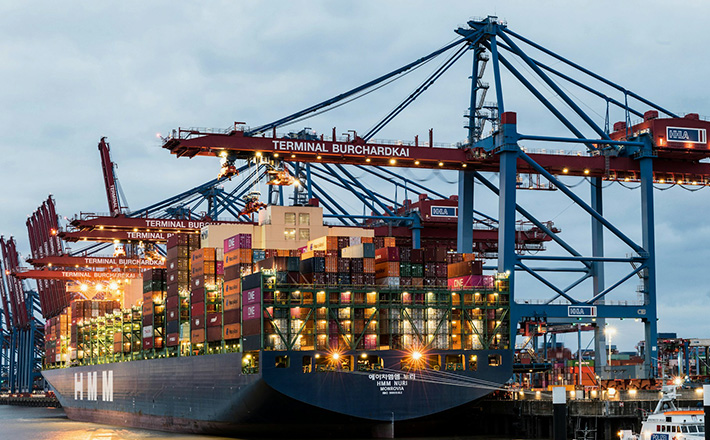International Ocean Freight Shipping: Best Practices for Businesses
International ocean freight shipping has become the backbone of global trade, connecting manufacturers, suppliers, and consumers across continents. In today’s complex logistics environment, understanding the dynamics of international shipping is crucial for businesses seeking efficiency, cost-effectiveness, and reliability. In this blog post, Balance Logistics Inc., a professional door to door international shipping service provider, will share the key factors affecting international ocean freight shipping, its types, etc.
International ocean freight shipping refers to the transportation of goods by sea between countries. It is the most widely used method for moving bulk cargo, thanks to its cost-effectiveness for large shipments. Ocean freight involves multiple stakeholders, including freight forwarders, shipping lines, port authorities, and customs brokers, each playing a critical role in ensuring smooth delivery.
The process typically starts with containerization, where goods are packed into standard containers for ease of handling. These containers are then loaded onto vessels at the port of origin and transported across international waters. Once they reach the destination port, containers undergo customs clearance before being delivered to the consignee.
Types of International Ocean Freight Shipping Service
Businesses can choose from different types of international ocean freight shipping services depending on their cargo requirements:
Full Container Load (FCL)
FCL is suitable for businesses shipping large volumes. The container is exclusively used by one shipper, reducing the risk of damage and theft while offering predictable transit times.Less than Container Load (LCL)
LCL is cost-effective for smaller shipments, where goods from multiple shippers are consolidated into a single container. Although it can reduce shipping costs, it may result in slightly longer transit times due to additional handling.Break Bulk and Project Cargo
Certain oversized or heavy cargo cannot fit into standard containers and requires specialized handling, including break bulk shipping or project cargo services. This type of shipping demands advanced planning and specialized equipment.

Key Factors Affecting International Ocean Freight Shipping
Understanding the variables that impact ocean freight shipping is crucial for optimizing supply chains:
Fuel Prices and Surcharges: Fluctuations in bunker fuel costs directly influence freight rates. Shipping lines often impose fuel surcharges to cover rising operational expenses.
Global Trade Regulations: Customs regulations, import/export restrictions, and international trade agreements shape shipping procedures and compliance requirements.
Seasonality and Peak Periods: Holidays, festivals, and global demand spikes can affect vessel availability, shipping schedules, and cost.
Port Congestion: Delays at ports due to congestion or labor shortages can impact delivery timelines and inventory planning.
Choosing the Right Freight Forwarder
Partnering with a reliable freight forwarder is critical for seamless international ocean freight shipping. Freight forwarders provide end-to-end logistics solutions, including route planning, documentation management, customs clearance, and cargo insurance. Selecting a forwarder with a global network ensures better access to shipping lanes, competitive rates, and timely updates.
Technology and Digitalization in Ocean Freight
The ocean freight industry is increasingly adopting digital solutions to improve transparency, efficiency, and risk management:
Cargo Tracking Systems: Real-time tracking provides visibility of shipment location and status, enhancing supply chain planning.
Digital Documentation: Electronic bills of lading and automated customs filing reduce administrative errors and processing time.
AI and Data Analytics: Predictive analytics optimize shipping routes, improve fuel efficiency, and anticipate potential delays.
Sustainable Practices in Ocean Freight Shipping
With rising environmental concerns, international ocean freight shipping is under pressure to reduce its carbon footprint. Key initiatives include:
Alternative Fuels: LNG, biofuels, and hydrogen-powered vessels are gradually being adopted to lower greenhouse gas emissions.
Slow Steaming: Reducing vessel speed decreases fuel consumption and emissions, although it may slightly extend transit times.
Green Ports: Ports implementing renewable energy, waste management, and digital operations contribute to more sustainable shipping practices.
Cost Optimization Strategies for Businesses
Effective cost management is essential in international ocean freight shipping. Strategies include:
Consolidation of Shipments: Grouping smaller shipments into a single container can reduce costs and improve efficiency.
Negotiating Long-Term Contracts: Securing fixed rates with shipping lines mitigates exposure to volatile freight rates.
Optimizing Packaging: Using space-efficient packaging minimizes container utilization and shipping costs.
Route and Mode Selection: Combining ocean freight with other modes of transport, such as rail or road, can reduce overall logistics expenses.
Future Trends in International Ocean Freight Shipping
The ocean freight industry is evolving rapidly, driven by technology, sustainability, and shifting trade patterns. Key trends include:
Automation of Ports and Vessels: Autonomous cranes, robotic container handling, and AI-driven navigation systems are improving efficiency.
Blockchain for Transparency: Blockchain technology enables secure, tamper-proof documentation and real-time shipment tracking.
Integration with E-commerce: Faster shipping options and streamlined global logistics networks are becoming essential for online retailers.
Environmental Regulations: IMO 2020 and upcoming carbon regulations will continue to reshape shipping practices globally.
Conclusion
International ocean freight shipping remains a critical component of global trade, offering cost-effective solutions for businesses transporting large volumes of goods. By understanding shipping types, selecting reliable partners, leveraging digital tools, and adopting sustainable practices, businesses can optimize their logistics operations and remain competitive in an increasingly complex global market. Strategic planning and forward-looking approaches will be vital for navigating the challenges and opportunities in international ocean freight shipping.




